Mardi Himal Trek is one of the most famous and easy trekking destinations of the Annapurna region. Many people from all over the world come to Mardi to take in great scenarios.
If you have some experience in trekking, then you will find Mardi Himal Trek as the easiest and short trek. Yes, you read it correctly. So, if you want to try out an easy and comfortable trekking trail, choose the Mardi Himal Trek.
Not only will the trek lead you to the Mardi Himal Base Camp, which lies at 4,500 meters above sea level, but it will also give you a stunning view of Mount Machhapuchhre, Annapurna Range, Hiunchuli, Pisang Peak, and other peaks. So if you wish to take in the vast cultural and natural beauty of Nepal’s magnificent Annapurna region of Nepal, then Mardi Himal Trek should be your destination.
Trekkers who wish to observe the beauty of the Annapurna region comfortably often choose Mardi Himal Trek. It is not only easily accessible people from any age group can complete the trek.
But this doesn’t mean the trek is super easy, it requires a good fitness level. It is moderately difficult but less difficult than trekking to Annapurna base camp. Plus, it is shorter in duration.
Are you planning to do this trek in the near future? Keep on reading to learn about the difficulty level of this beautiful trekking destination.
How Difficult is the Mardi Himal Trek?
If we compare Mardi Himal Trek with other trekking regions of Nepal, the difficulty level falls under the moderate category. Also, many people find the Mardi Himal Trek easy because it has well-segmented walking hours.
Challenges of The Mardi Himal Trek.
The Winding Route
The Mardi Himal Trek starts from Pokhara, and you will start your trekking journey from Phedi to Deurali. You will encounter a steep path leading up to the Forest Camp.
Mostly, you will be walking in the forest. You will cross the Low Camp, Badal Danda, and reach the High Camp. The paths are mostly uphill. From High Camp, you will get a breathtaking view of Heuchuli, Annapurna I, II, III, Fishtail, and Pisang Peak upfront. You will leave all your backpack at the High Camp hotel and head towards the Madi Himal Base Camp via Upper View Point. It will be a tough 4 hrs walk from High Camp.
While returning, you will trace the same route till low camp, then the way is diverted to the Siding. From Siding, you will catch a Jeep to Pokhara. The most difficult part the route is from High Camp to Upper Viewpoint, which is steep uphill. Similarly, trek back to Siding, which will be a steep downhill. Walk slowly to prevent Knee pain.
The way is pretty doable if we talk about the route’s difficulty. People of any age group can easily walk along the path. However, if you are inexperienced in trekking, then you may find the route to be long and more complex.
The Rainy Seasons
June to August are considered the monsoon season in Nepal, and the trails can get pretty muddy. So, trekking around the Mardi Himal Trek during this season can get uncomfortable.
Also, December to February is winter so the temperatures can get unbearably cold, and snowfall may occur. In addition, even local people of higher altitudes like the Upper viewpoint, migrate towards lower altitude places during winter. So, trekking during this season is also a challenging task.
However, if you prefer peace and loathe the crowd during the peak seasons, the off-season Mardi Himal Trek is now gaining popularity.
The Weather and Temperature
Winters in the Mardi Himal Trek can get pretty cold. The nights are comparatively colder than the daytime. Since winter gets snowfall and terrains are covered with snow, the temperature goes below freezing.
The weather in the mountain is unpredictable. Therefore, you can expect storms and rainfall followed by slippery muddy surroundings during the monsoons.
The Altitude Sickness
Whenever you trek to any high-altitude region, it is more than likely that you will encounter some level of altitude sickness. Altitude sickness happens because of the low level of oxygen in the atmosphere at the place of higher altitudes. Symptoms may range from headaches, shortness of breath, nausea, diarrhea, or a combination.
You must reach over 4,500 meters above sea level during the Mardi Himal trek. So, the chances of you getting altitude sickness also increase. So, if you encounter any of these symptoms, trek down to lower altitude places.
How can you overcome the Mardi Himal Trek difficulty?
Stay Hydrated and Acclimatize
You must drink plenty of water to fight altitude sickness and always hydrate your body. Acclimatizing is reaching a higher height from a lower one and letting your body adjust your oxygen level.
Avoid Drinking Alcohol And Smoking
Also, try not to drink or smoke as it may cause dehydration and trigger altitude sickness. Drink plenty of water, trek slowly at a comfortable pace, and avoid unnecessary hurrying.
Follow Your Guide
Hiring a local guide while trekking is a good and safe option. Local guides know the ins and outs of a place. They also know the best way and the place you should stay at. In addition, they are familiar with local tea houses and will help you choose the best option. Also, they have basic medical training and ample knowledge regarding altitude sickness and acclimatization.
Choose An Appropriate Season
The best time to plan for your next Mardi Himal Trekking is the spring season which falls in March, April, and May, and the autumn season, September to November.
In April and May of spring and October and November of Autumn, trekkers worldwide flock to Mardi Himal trek. You will need to pre-book the flight tickets/bus tickets, hotels, and accommodation during the route in peak season.
However, the off-season Mardi Himal Trek will be the better time if you prefer peace and avoid the crowd. The trek is doable all around the year.
Train Your Lungs
Before you go on a trek, cardiovascular training exercises such as cycling, running, swimming, or brisk walking are always wise decisions. In addition, these activities help build your oxygen intake capacity and boost your stamina. Also, it will help you tackle altitude sickness in the Mardi region.
How Can a Trekker Reduce the Trek Difficulty?
Physical And Mental Fitness
Though only moderately tricky, Mardi Himal Trek demands a person to be physically and mentally fit. Even though you do not need a high fitness level, average trekking strength, stamina, and endurance are advisable. Also, it would be best to be mentally prepared to go on a trek and have a positive mindset.
Navigating And Communicating Skill
Mardi Himal Trek can be difficult to navigate, especially if you are going for the first time. If you hire a guide, they will navigate for you, but taking a route map can be helpful. The availability of Google Maps in this area could be better, so carrying a physical map and asking the locals along the way is best. Knowledge of the basic Nepali language can help too. Also, feel free to communicate with the locals. They are very friendly.
Carry A First Aid Kit
Any trekking experience might expose you to various forms of injuries and illness. So having a first aid kit filled with all the essential elements, such as bandages, scissors, sanitizers, wet wipes, gauze, thermometer, medicines, etc., is always a safe choice.
Pack Well
Mardi Himal Trek, as beautiful as it is, demands you to pack well too. We recommend carrying the essential trekking gear, including poles, sleeping bags (in winter), headlamps, hiking boots, etc. In addition, appropriate weather-friendly clothing is also necessary. Windcheaters, thermal wears, hats, caps, gloves, socks, and trekking pants are always good clothing choices. Also, always carry a good phone with a power bank and a charger.
What is the safety level of the Mardi Himal Trek?
Although relatively new, the Mardi Himal Trek is a unique trekking trail in Nepal. Lying in the Annapurna region of Nepal, the Mardi Himal Trek is one of the safest trekking paths. A few years back, people used to get lost, but in recent years, the route is very popular amongst the locals and foreigners. You will meet many people in the Autumn and spring season. Also, the trails are clear and navigated with the tree mark. So make sure that you follow the signs.
However, always check the weather pattern and keep up to date with the latest news because these things change unpredictably in the mountainous region of Nepal.
Conclusion
Our itinerary at the Adventure Great Himalaya is well-curated by trekking experts to make your trekking journey as easy as possible. Also, the itinerary is designed considering your comfort and safety.
The itinerary is customizable and can be modified according to your fitness level and availability. Do contact us for more information and coordination. We are here to help.

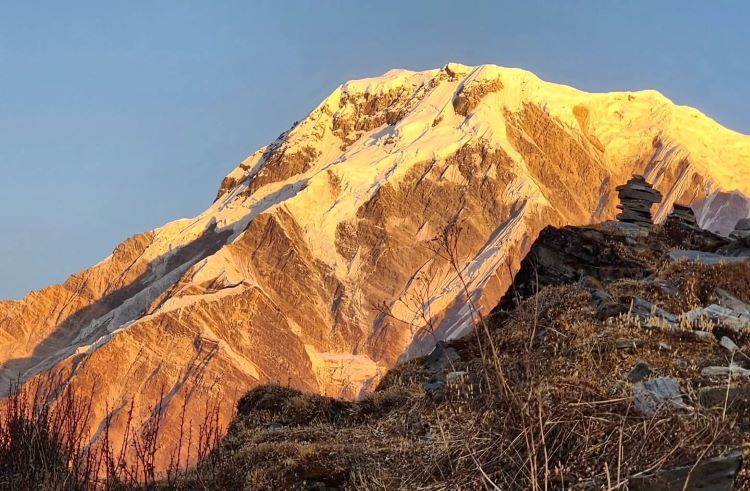
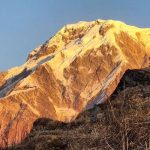 Wednesday, November 26th, 2025
Wednesday, November 26th, 2025
 Friday, November 21st, 2025
Friday, November 21st, 2025
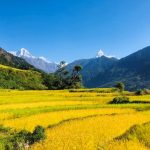 Saturday, October 18th, 2025
Saturday, October 18th, 2025
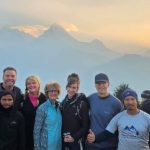 Friday, October 17th, 2025
Friday, October 17th, 2025
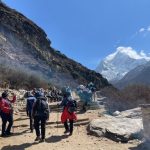 Tuesday, September 2nd, 2025
Tuesday, September 2nd, 2025
 Saturday, August 30th, 2025
Saturday, August 30th, 2025
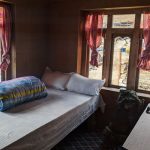 Monday, July 7th, 2025
Monday, July 7th, 2025
 Thursday, July 17th, 2025
Thursday, July 17th, 2025
 Monday, July 7th, 2025
Monday, July 7th, 2025
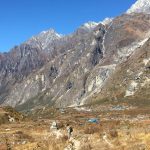 Saturday, June 14th, 2025
Saturday, June 14th, 2025
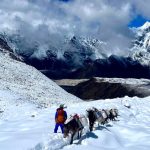 Wednesday, August 20th, 2025
Wednesday, August 20th, 2025
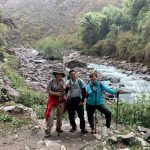 Wednesday, June 25th, 2025
Wednesday, June 25th, 2025
 Tuesday, August 5th, 2025
Tuesday, August 5th, 2025
